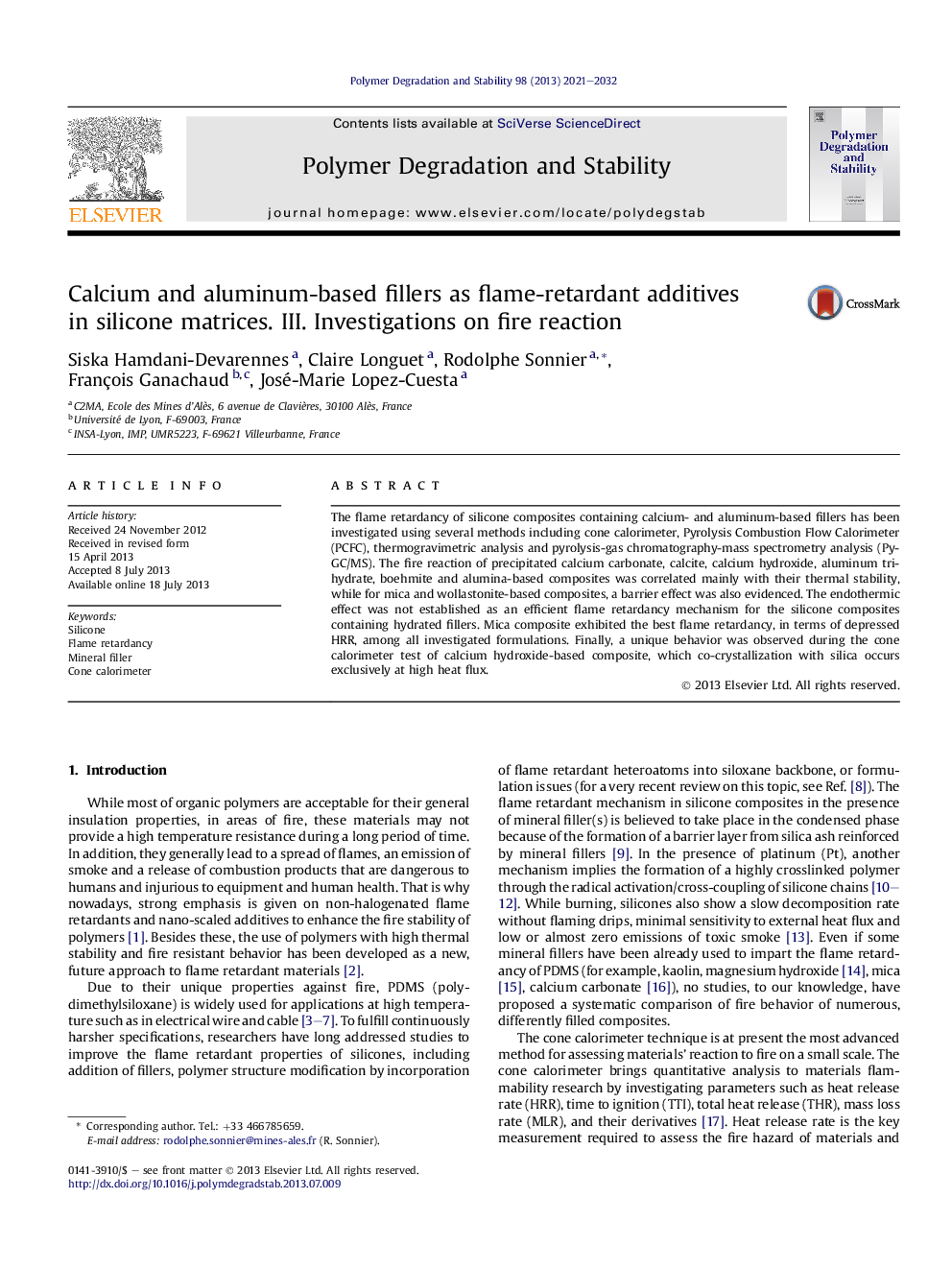| Article ID | Journal | Published Year | Pages | File Type |
|---|---|---|---|---|
| 5202066 | Polymer Degradation and Stability | 2013 | 12 Pages |
The flame retardancy of silicone composites containing calcium- and aluminum-based fillers has been investigated using several methods including cone calorimeter, Pyrolysis Combustion Flow Calorimeter (PCFC), thermogravimetric analysis and pyrolysis-gas chromatography-mass spectrometry analysis (Py-GC/MS). The fire reaction of precipitated calcium carbonate, calcite, calcium hydroxide, aluminum trihydrate, boehmite and alumina-based composites was correlated mainly with their thermal stability, while for mica and wollastonite-based composites, a barrier effect was also evidenced. The endothermic effect was not established as an efficient flame retardancy mechanism for the silicone composites containing hydrated fillers. Mica composite exhibited the best flame retardancy, in terms of depressed HRR, among all investigated formulations. Finally, a unique behavior was observed during the cone calorimeter test of calcium hydroxide-based composite, which co-crystallization with silica occurs exclusively at high heat flux.
